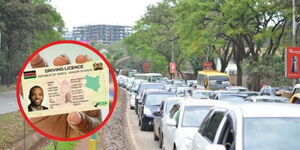Kenya's key export sectors are grappling with a significant downturn, as new figures from the Kenya National Bureau of Statistics (KNBS) reveal alarming drops in the country's coffee, tea, and cut flower exports.
The latest Leading Economic Indicators report, released on Friday, July 19, exposes the fragile state of these industries, highlighting a troubling trend for Kenya's economy.
The May 2024 report unveils a sharp decline in the export volumes of coffee, tea, and cut flowers. Coffee exports fell from 5.4 thousand metric tonnes in April 2024 to 4.7 thousand metric tonnes in May 2024, a reduction mirrored by a drop in value from Ksh3.9 billion to Ksh3.6 billion.
Tea exports suffered a similar fate, with quantities shrinking from 56.3 thousand metric tonnes to 51.6 thousand metric tonnes and values decreasing from Ksh17.3 billion to Ksh15.6 billion.
In a worrying trend, the once-thriving cut flower sector also saw its exports plummet. The volume of exported flowers tumbled from 16.1 thousand metric tonnes in February 2024 to 8.7 thousand metric tonnes in March 2024, accompanied by a staggering drop in value from Ksh13.3 billion to Ksh6.1 billion.
This decline is exacerbated by a broader decrease in trade volumes. Kenya's total trade value fell from Ksh329.1 billion in April to Ksh307.1 billion in May, though the overall export value saw a slight increase from Ksh92.9 billion to Ksh94.5 billion.
Conversely, the total import value also saw a decline, dropping from Ksh236.2 billion to Ksh212.6 billion over the same period.
Despite the challenges facing its traditional export sectors, Kenya's economy shows mixed signals elsewhere.
The export of fruits saw a remarkable increase, more than doubling from 5.0 thousand metric tonnes in February to 12.3 thousand metric tonnes in March, with the value rising from Ksh1.0 billion to Ksh2.0 billion. Additionally, the volume of cane deliveries increased by 10.4 per cent, reflecting a notable recovery in this sector.
Retail market prices for staple foods have also shown a decrease. The price of maize dropped from Ksh54.4 per kilogram in April to Ksh52.3 in May, while beans fell from Ksh154.1 to Ksh149.2 per kilogram during the same period. These reductions could potentially provide some relief to consumers amidst the broader economic turbulence.
The report highlights Uganda and Pakistan as Kenya's primary export destinations in May, with export values of Ksh10.6 billion and Ksh6.7 billion, respectively. Meanwhile, China and the United Arab Emirates emerged as the leading sources of imports, with values of Ksh47.0 billion and Ksh36.9 billion.












